- DroidAfrica
- Gadgets
- Tecno
- Tecno Spark Youth
Tecno Spark Youth

Tecno Spark Youth Highlights and Overview
Tecno Spark Youth is the latest feature packed affordable smartphone from Tecno Mobility. As the name implies, the device is in many ways similar to the Tecno Spark 2 and the Spark 2 Plus. However, the built and design of the Spark Youth looks more appealing, bearing a vertically placed rear camera sensor, just like the recent Tecno Pouvoir 2 Air.
So aside the design, what is the key difference between the Tecno Spark 2 and the Spark Youth? Camera! The Tecno Spark Youth has just 8-megapixel back and front camera, as against the 13 and 8 megapixel back and front camera used in the Spark 2 mobile phone.
Specification wise, the Tecno Spark Youth comes with same 6.0 inch HD+ display, which has a 720 x 1440 screen resolutions. The device is powered by Mediatek MT6580 CPU, along with MALI-400MP2, 1GB RAM and a 16GB internal storage, expandable up to 64GB via SD card.
What’s more? Does the Tecno Spark Youth have 4G LTE network? No, the device does not have 4G LTE network. OK, but does the device have fingerprint scanner? O yes, the Spark Youth has a rear placed fingerprint scanner. It also comes with Face Identification using the front facing camera.
The Tecno Spark Youth is currently available in Black Midnight, Champagne Gold, Bordeaux Red, Blue City colors. The device runs on Android 8.1 Oreo (Go Edition) out of the box, and is fuelled by a 3000mAh battery. Other key specifications and silent features of the Spark Youth are itemized in the specs table below.
Tecno Spark Youth Full Specifications and Features
NETWORK
| Technology | GSM / HSPA |
| 2G Network Bands | GSM 850 / 900 / 1800 / 1900 - SIM 1 & SIM 2 |
| 3G Network Bands | HSDPA 850 / 1900 |
| 4G Network Bands | No Support for 4G LTE Network |
| Speed | HSPA 21.1/5.76 Mbps |
LAUNCH
| Also Known As |
- - |
BODY
| Dimensions | 156.95 mm x 76.6 mm x 8.1 mm |
| Weight | 155 g (6.17 oz) |
| Build | Premium Plastic |
| SIM Type | Dual SIM (Nano-SIM, dual stand-by) |
DISPLAY
| Display Type | IPS LCD capacitive touchscreen, 16M colors |
| Size | 6.0 inches, 92.9 cm2 (~76.5% screen-to-body ratio) |
| Resolution | 720 x 1440 pixels, 18:9 ratio (~268 ppi density) |
PLATFORM
| Operating System | Android Android 8.1 Oreo (Go edition) |
| Chipset | Mediatek MT6580 (28 nm) |
| CPU | Quad-core 1.3 GHz Cortex-A7 |
| GPU | Mali-400MP2 |
MEMORY
| RAM + ROM | 1 GB |
| Card Slot | Yes, up to 64 GB via microSD card |
MAIN CAMERA
| Camera Type | Single Lens |
| Camera Sensor(s) | 8 MP, f/2.0, AutoFocus, |
| Camera Features | Geo-tagging, panorama, f/2.0 aperture, HDR |
| Video Resolution | 720p@30fps |
SELFIE CAMERA
| Camera Type | Single Lens |
| Camera Sensor(s) | 8-megapixel |
| Camera Features | FaceID, Face Beautification |
| Video Resolution | 720p |
SOUND
| Loudspeaker | Yes |
| Speaker Location | Chin, below display |
| Audio Jack Type | Yes, 3.5mm audio jack |
CONNECTIVITY
| Bluetooth | Bluetooth 4.2, A2DP |
| NFC | |
| GPS | Yes |
| FM Radio | Yes |
BATTERY
| Battery Capacity | Removable Li-Ion 3000 mAh battery |
| Wireless Charging | No |
| Talk Time Talk Time is the longest time that a single battery charge will last when you are constantly talking on the phone under perfect conditions, Ambient temperature and highly dependent on the cellular network environment such as the distance to the closest cell network tower. | Up to 24 hours |
| Stand-by | Up to 380 hours |
OTHER FEATURES
| Sensors | Fingerprint (side-mounted), accelerometer, proximity, compass |
| Box Contents | Charging Brick / USB cable |
Tecno Spark Youth User Reviews and Opinions
LEAVE A REPLY
Disclaimer Note
We CANNOT guarantee 100% accuracy for the specification table above.

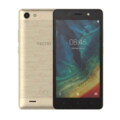
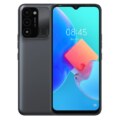
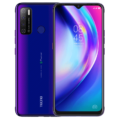
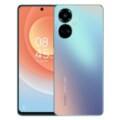
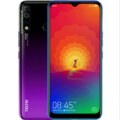
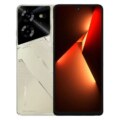






The phone so far has proven to be nice just got it.The battery with data on can last up to appromately 10hrs
I just got mi too and it nice
I do like the phone but the battery do not last up to one day and my camera do not clear don't know what to do
I bought the phone two days ago and the camera is clear the best of my past phone maybe it is a fake version of the phone you bought
My own battery is removable and I don't know why it's like that
i ilke the phone but littie problem their is the battery
I bought the phone it’s real good, but the only problem it’s the battery it’s does not last long as expected
i want to buy the phone, what is the problem of the phone? Pls someone should tell me befor i will go wrong
I bought the phone some weeks ago ,but am not enjoy the battery atall and the battery is removable
Am not enjoy it atall.
Can I return it back to any near by tecno office .
I love d fone with passion but d battery is not lasting for a day
You’re right. D fone is too good
pls how much did u get yours
Please the phone used to tell me my caller network but it stopped why? And how can I set it
Comment: plz is d battery removable or non removeble??? because I’m confused ooo
i want to buy the phone pls can sm 1 tell d disadvantages of the phone
Your specs says it supports OTG but I just bought a new OTG but it does not work
Why?
It’s the phone manufacturer that disabled the OTG feature.
So just download ES file explorer and use it when ever you want to work on files on your OTG cable
The phone freezes saaa